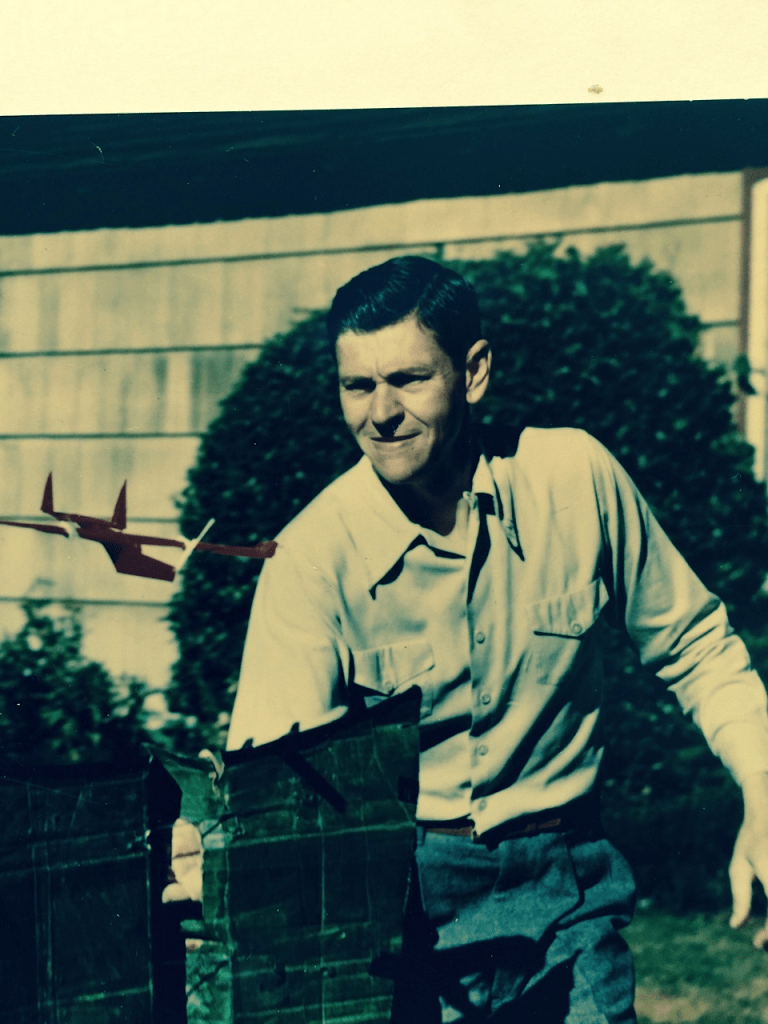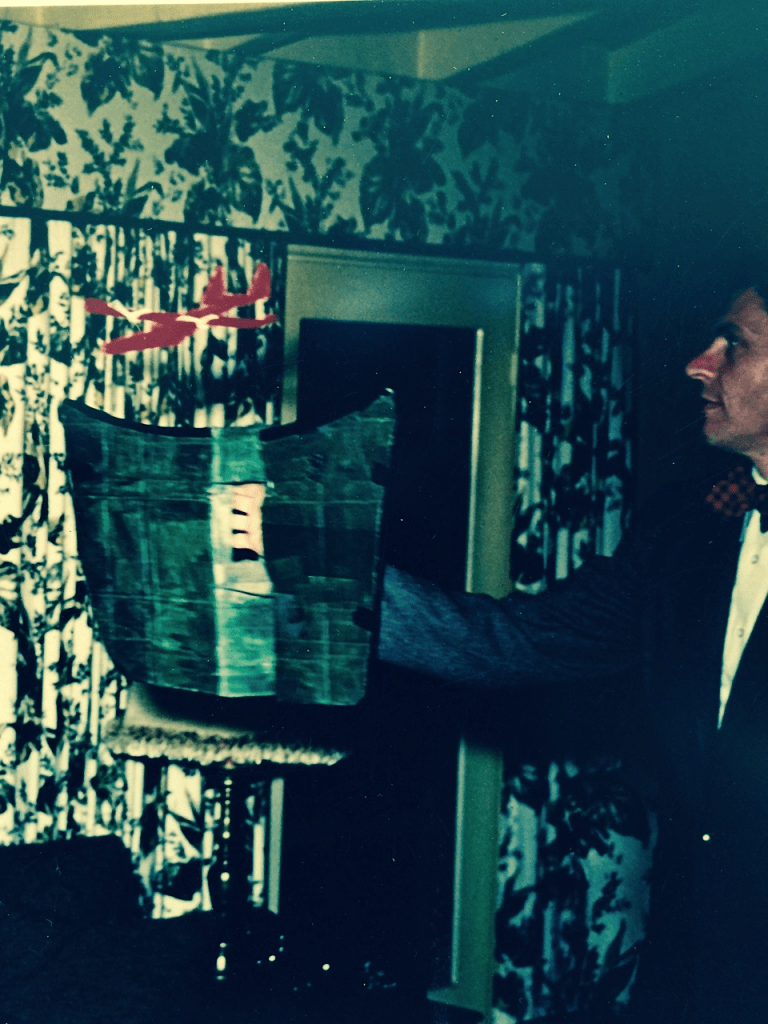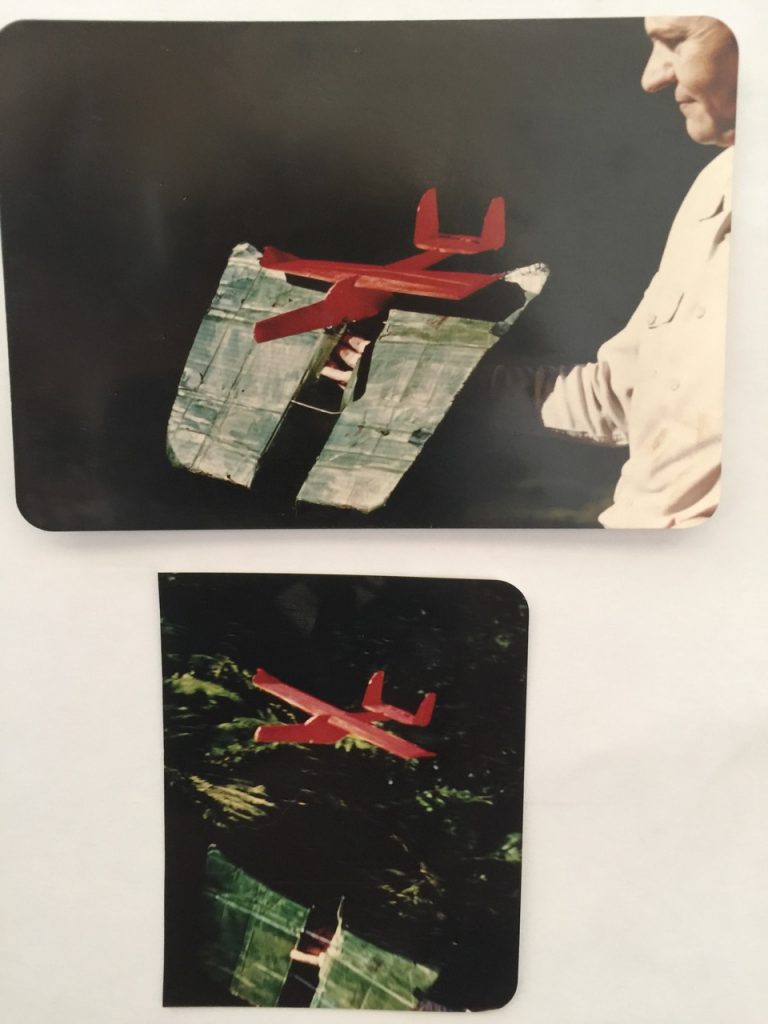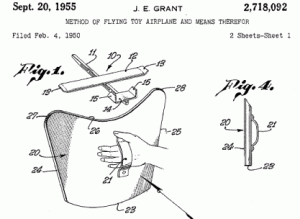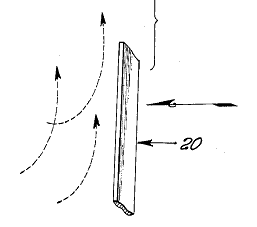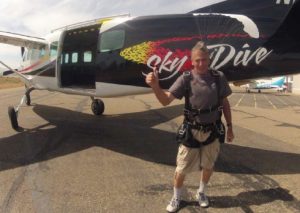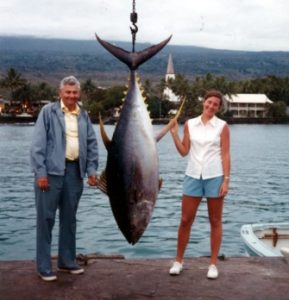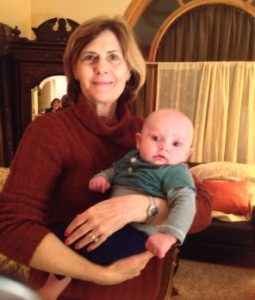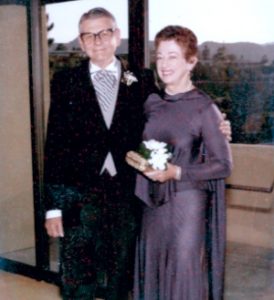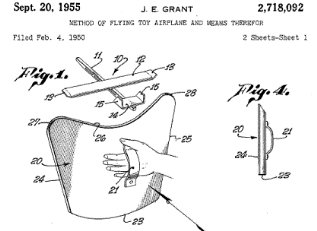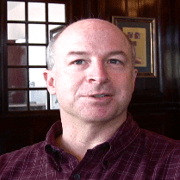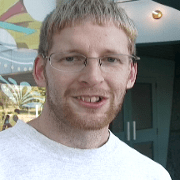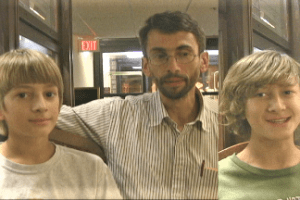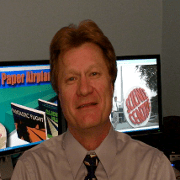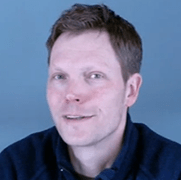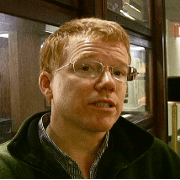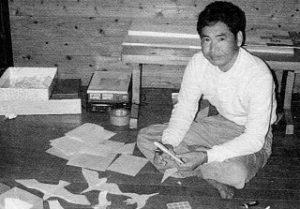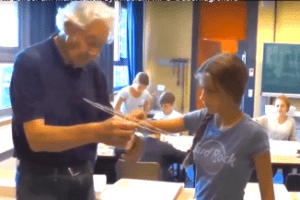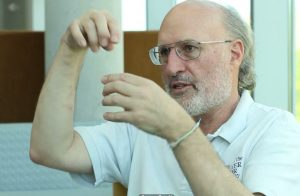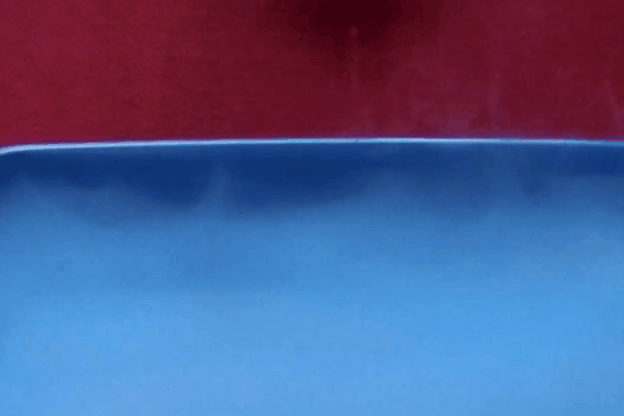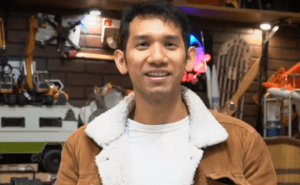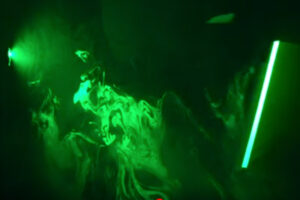(I asked him to introduce himself)
Sure, I’m Tyler MacCready, the son of Paul MacCready who is the father of human powered flight. He started a company called Aerovironment that has a long history of making one-of-a-kind airplanes. I work at that company now building prototypes for ocean projects. We’re trying to get the company to look into the ocean: ocean wave power, ocean current power, unmanned ocean vehicles. Back to human powered flight, I was the test pilot for our first human-powered airplane because my father needed someone who was very light weight—I was only 14 at the time. He needed someone who was very light weight, available to work and knew how to fly. I knew how to fly because he’d had us flying hang gliders from when I was 10 years old, so I was familiar with flying. I practiced pedaling a lot. Then I worked on all our other different airplanes over the years: human powered, solar powered, flapping planes…
Our company, our main revenue these days comes from small, unmanned aircraft—little drones, basically spy planes, 4 foot wing span, radio controlled planes with a camera on them that can fly up to 5 miles away, for two hours and send back a beautiful video image. (question about what powers the planes) Lithium batteries. That’s a field we were in for a long time and then once lithium batteries became a viable option, that really changed the possibilities for aviation (model airplanes and drones). There’s even the possibility of an eternal plane, a solar powered airplane that can get enough energy during the day, store it in batteries and stay up all night. The battery technology is not quite at the stage to have the energy density to achieve that but it’s getting close. I think we’ll be there sometime soon. In our company we have a lot of talent that’s able to make these unmanned airplanes, which is having to fit a whole lot of technology into a very energy efficient, autonomous vehicle.
All that talent should be equally applicable to ocean vehicles. Even though we came from the aircraft side of things, we’ve been thinking that the ocean is going to be a bigger market ultimately for unmanned vehicles. You can send up one airplane and it can see everywhere but in the ocean see right where you are. So if you want to know what’s going on everywhere you need a vehicle everywhere. We’re hoping that’s going to be a big future for the company but right now there are just two or three of us working on that. We build prototypes and put them in the water. We’re also working on ocean power because our company has been involved in wind power for several decades now. So we’ve been starting to say, what can we do in the ocean—which is a difficult environment, but full of power.
(answering a question about the origins of walkalong gliding)
Ever since we were little kids we were building model airplanes and paper airplanes, doing a lot of flying. Then we got involved in hang gliding when that was beginning around 1971, ’72. My father thought, “Well, this will be interesting.” He got us involved in hang gliding. We started making a lot of paper airplanes that looked like hang gliders and doing a lot of slope flying where the wind goes up a slope. It make an up current and we’d go down to a local hillside and fly our paper airplanes in the slopes. Between my older brother, I and various friends, we’d get competitive about who can make the best plane, who can get the longest flight on the slope, who can make a plane that’s going to fly at the flattest glide angle.
I remember my older brother and I, we were particularly competitive with this at home. (we) were flying—we had a good space between the couches in the living room and could fly our paper airplanes, glide them from one side and see how far they’d go across the living room. As we made them better and better we got them to hit the wall on the other side of the living room and we’d see how high can we get our planes to hit the wall? We eventually realized that if the goal is just to hit the wall as high as possible on the other side—with your gliding plane, not just crumpling and throwing a piece of paper, although that would win—that you could launch the plane and then run around the couch and just before the plane hits the wall give it a little swoop of air. It would hit the wall a foot higher and you’d say, “I won.” (laughs) We started looking into other ways, “How can we get that plane to hit the wall higher on the other side?” We eventually realized that we could follow the airplane all the way across the living room with a board underneath it, making an up current just like the slope lift that we had been flying in outside
(I had never flown paper airplanes outside in updrafts so I ask Tyler to elaborate)
Yes, we’d fly hang gliders in slope lift but also fly all our models on slopes. We’d be on the slope, and wind is coming up, so we’ve got the lift there. It was a more fun place to fly your paper airplanes because you could get flights for a minute or more. Sometimes with just the right design it almost seemed like the plane would go back and forth all on its own, and sometimes even catch a thermal and fly away. So we had a great time flying our planes outside in lift rather than just indoors. But then we found that we could create our own lift and keep them up as long as we followed around behind them with a board. Once we found that we could do that with our paper airplanes—and this was…my father has it written down…I was about 13 at the time and my older brother would have been 15.
It was right around then that we started working on our first solar powered airplane that ended up flying a one mile figure-8 course to win a competition. While we were working on that we had a lot of time to spend out at a very lonely airport in a big, empty hanger waiting for the wind to die down so we could fly the human plane. We had a lot of very light weight material to work with, all the scissors and tape and everything that we could want, and a bunch of people who knew about aerodynamics. So we started building every design we could possibly think of to see what kind of design could fly the best, especially making the walkalong glider. We called it the walkalong glider because you’d walk along behind it to keep it up in the air. We’d see how slowly we could make them fly, how maneuverable, we’ d make fast ones to fly outside in the wind. Normally they don’t handle turbulence very well when they fly very slowly. We make outdoor version, indoor versions, really big ones, really skinny bitty ones… we just did a lot of experimenting to see how well we could make these fly.
It was always just for our own entertainment because it didn’t seem to have the universal appeal of something like a Frisbee which anybody can fly. You can go out on any kind of even windy day and still always fly a Frisbee, whereas these gliders were a little bit more delicate and needed just the right conditions. They’re best when they’re flown indoors. It’s actually hard to find large indoor spaces. Usually in a house the rooms are too small. You start and get to the other side too quickly. Hallways are too narrow. Schools have big spaces. Being in a gymnasium or classroom is great to fly. When people see us flying walkalong gliders a lot of people want to try and do it and a lot of people want to figure out how to make them themselves or would like to know where they can get one. Because it’s made out of unusually lightweight material it’s not the kind of thing that’s easy to go to a store and buy the materials. So even though the plane itself is very simple, finding the material and putting into the right shape is difficult to show somebody how to do.
It looks like a fun toy, so this idea of, “Can we market this” always comes up. I know back in the 1970s we sold a few for $2 US each. Back then 2 dollars was a lot of money so people would grumble. We’d sell them to hang glider pilots. We were these young kids—14, 16—hanging out with all the hang glider pilots and I got them to buy some of our planes. There have been numerous attempts to get toy companies interested in the glider but it’s really difficult to get a toy company interested in something that’s different, especially something they don’t know how to advertise. It’s interesting to see, actually, how un-creative the toy companies are (laughs).
People at the company (Aerovironment) went through the effort of patenting the idea. It was at that time that we found out that—although we had come up with this all on our own when we were kids—and we found out that we weren’t the first people to think of this idea. There’s a patent that shows almost exactly what we were doing, a slightly different design, but a similar idea from 1955. (question about if Tyler knows any more about the 1955 patent other than what’s written in the patent) No, I don’t really know anything about it. It doesn’t seem that it ever became a toy. I’ve never heard of anybody coming across one. I would also imagine that people have probably come up with it before. This wasn’t based on any new technology.'
(question about why did the idea go extinct instead of spreading)
I think it might be that issue of when somebody shows it, it looks really interesting but it’s very difficult for other people to start doing it. Now it seems to have been able to spread because of the internet. That made the idea accessible. You need to see it. If somebody just describes it, it’s like “Whatever?” But when you see it, people tend to think, “Wow! I want to do that!” So the internet really helps. It makes it easy to see how it’s done. It’s also one of those things where you can have all the directions you want on the box, but to see it done you go, “Oh, I get it!” We in the company were trying to get Mattel interested in it, and other toy companies, and just couldn’t generate any interest.
Then there was a Scientific American Frontiers show—I guess it was the late 1990s. It’s a show that Alan Alda hosts and they were going to do it on flight. I think they went and spoke with my father and he sort of convinced them that, “Well, we’ve got a whole show’s worth of material. He also pushed this idea of, “You want to do a segment on the walkalong glider.” They came out and we did the filming so I was able to show Alan Alda how to fly the glider. It’s funny actually, while we were doing that filming it was outdoors, very calm early morning. Right in the middle of the flight when they had the cameras on a little bit of lift (a thermal?) came through and the plane was flying several feet above —and I’m staying underneath it with my hands up as though I still have control of this, I know what I’m doing! That’s one of these things I actually learned from my father: when things are going right, pretend that you meant for that to happen. It ended up making a nice segment, but also that TV show has a website associated with it.
They asked if they wrote in questions, would I be able to answer some questions on the website? I said I would, but I also knew what the main question was going to be, which is, “Where can I get one?” They aren’t available anywhere. I also thought, “Well, this just might be the opportunity. I could build these myself because now I’ve got a free marketing opportunity.” This is another key thing I’ve learned from watching my father develop things. As you make some progress or succeed in something, other opportunities will show up. You go a long way if you keep taking advantage of that next opportunity that shows up and you wind up following a development path that you couldn’t have planned out, couldn’t have predicted. It’s not even something that you necessarily wanted to do to begin with, but when a success happens new opportunities are going to present themselves. At that point you have this choice to say either, “I did this, let me just stop at this success. I’ve achieved what I wanted to do.” Or you can say, “Let’s take this unique opportunity and see where it takes me.” So I had this opportunity for some great free advertising. The internet was around now, so I could actually do all of this by myself because I could take orders on the internet. I could even have my directions and video on the internet showing how to do this. So I decided, “OK, I’m going to do this.”
I figured the first thing I needed was a website so I got myself some software. I didn’t know what I was doing but I figured, “I can make a website, I’m sure I can do this.” Just looking at other websites I started to put something together. I must have asked someone or searched the internet to find out, “How can I take people’s credit card orders? How can I get money from this website? I got that linked in. Then it was like, “OK, but now I also have to figure out how do I make these gliders?” Actually the very first thing I did before I decided I was going to go into business I did enough prototyping to convince myself that I could make these gliders myself. So this was going to be my business model. I was going to be building these, I was going to be doing everything myself. That way I don’t have to coordinate with anybody else. I’m going to sell them on the internet and figured out what I was going to charge for these. I knew I was going to get tired of making them really quick unless I was making a big profit. They cost me 5 dollars make and to ship, but I sold them for fifteen dollars so every time I make one I’m making ten dollars. “OK, that’s enough money to keep me motivated.” The shipping was another thing. “What sort of box am I going to put these in?” So I found some cheap boxes. I sort of knew how I was going to make the planes, but I also said on my website—like I’d always heard when I was a kid—you have to wait 6 to 8 weeks for delivery.
So I figured, I’ve got a nice window of time here. I remember waiting at home, waiting for the TV show to air. I had my website up and running, the show aired and by the end of it I think I had orders for 200. By the next day I had orders for 600. I knew how to make them but I hadn’t actually made them yet, at least my real production setup. So that’s when the panic started! I was going to buy pre-sliced foam and cut out these wing shapes. I made 10 little aluminum molds that I could make myself to squeeze the wings in. I went to Sears to buy a convection oven to blow air around for even heat throughout the oven and found that the convection oven wouldn’t cook at low enough temperature. So I went back and returned the oven. I ended up having to buy a $2000, very expensive oven that would hold its temperature within one degree throughout because the foam had to be cooked hot enough to mold it but not hot enough to melt it. There’s just a few degree difference there. (question about expanding polystyrene beads into an enclosed mold) Well I didn’t have a mold to expand into. I didn’t have a real production thing but I can bend aluminum. Also, I wouldn’t want to make a very expensive finish mold because it might not be the right shape. Then I’d have to make a whole new mold. So I made something that I was going to be able to keep modifying. I figured out how I was going to produce these, set up sort of a mass production system at home.
I had to figure out how to get labels on them. I had to figure out how to get nose weights that used a special washer that I got from a certain chain of hardware stores in Los Angeles. They were the only ones selling just these right washers so I had to go around to all their different outlets and buy all the washers they had. I was making these things, putting them in boxes and sending them. People started writing back, saying the box arrived but it was destroyed. Most of them made it OK. The ones that didn’t make it successfully I immediately refunded the money and send them a new one. That’s when I started realizing that customer service is a big time consuming part of a business, as is packaging and shipping. Those ended up taking as much time as my manufacturing. I also wanted to make sure I was selling a good product so I’d test-fly every one. I had to write up directions and copy them to put in each box.
I was using another technique that I learned from my dad that you don’t have to know what you’re doing to go ahead and do something. The best way to learn is by doing it. So I was going to be running my own business and I didn’t know anything about running my own business, so I just did it. One scary part was a day or two after I had gotten these initial orders I had the credit card thing set up so I was actually taking the money from people right when they placed the order, and the credit card company called me up. And they said, “Hey, we see you’re a new business. You look like you’re doing a great business. We just want to make sure that you’re shipping within 24 hours.” It turns out that the law is you have to ship within 24 hours of actually taking somebody’s money. If you can’t ship that quickly you get an authorization to take that money but don’t actually charge that credit card until you actually deliver. I told her, “No, I’m not shipping in 24 hours. “ I said 6 to 8 weeks, but it’s the law that you can’t take the money and say 6 to 8 weeks later—with credit cards at least. But she was very nice. She said, “Well, just get them out as soon as you can.” I started learning a lot about credit card companies and why Visa and Mastercard are the two main ones and how to deal with a slightly irate person who checks their credit card statement and says, “Hey, I’ve been charged for this and it hasn’t been delivered.” I’m like, “Oops, ok, that person goes up to the top of my list of who to send to.” So I had all these difficulties. And then the issue with the boxes. What I really needed was custom-made boxes, which are more expensive but are exactly the right size for my gliders. So I kept that business going for a few months and ended up selling about 2000 planes, making about 20,000 dollars profit and I still have a nice $2000 dollar oven left over.
Since I wasn’t doing any more advertising, eventually the orders started dwindling to where there’d be a dozen in a week or less. Then I found I could keep up (laughs) but by then I was really tired of taping boxes together, filling up my car with boxes and going to the post office. The post office didn’t like me. They said I was filling up all their bins, could I go to the main post office. Then I got a call from a toy company. It’s a Canadian business but they do all their business out of Hong Kong. The guy said, “I bet you’re making these by the thousands. Would you like to sell them by the millions?” I thought about that. I knew it would be a lot less money. I wouldn’t be making $10 on each glider anymore, but I thought, “That would be nice.” They said, “All right, let’s do it.” It turned out to be a really high-energy toy company called WowWee with a lot of dynamic guys who know how to get stuff done really quick. They were owned by Hasbro at the time so they had a big company behind them. So the next thing I know they’re flying me over to Hong Kong with me bringing some of my gliders. We meet with manufacturers. I started showing them how to make the glider so it’ll do what I think it’s supposed to do. They were figuring out how to advertise. It was a couple days a few different times. I went over once to show them how to make everything then again when they had the finished product to make sure it was actually being done right. Since it’s a flying toy, it’s not like a figurine that’s the right shape. It really has to function well. That was really nice because I didn’t have to make them anymore.
I kept up my website for awhile, but I ended up so confused by this whole thing that I failed to renew my website. Somebody who snaps up websites that get a lot of clicks took my website. And I was absolutely happy about that. “All right, I’m out of business! I do not sell these things anymore. I don’t have to respond to anything.” I was kind of tired of it at that point.
(question about how much the toy company bought rights for)
That was another thing. Now I’m dealing with a toy company. I don’t know about dealing with a toy company. I found out the deal is royalties. You get a percentage of their sales. This is another important thing. I think the reason this toy company was because there was a guy who was sort of a robotics expert who had recently started working with them. I had some interest in robotics. He was working at Los Alamos. This was before I was going into business. I just had some robotics ideas and he seemed to be the only person who was thinking along similar lines. I’d built some things and driven all the way out to Los Alamos New Mexico just to meet with him and talk about some of this stuff. He wound up with a toy company, I wound up making a toy, so I wound up at the toy company as well because of this connection. I’ve always thought it’s another very important thing to actually know people. Not necessarily power people, but just to know people who can connect you with other opportunities. You want to do something, you want to know about something, there’s somebody you can call or there’s somebody who calls you. I think they did sell a million or something gliders. I didn’t know anything about how to negotiate a contract with them, so I just said, “I want whatever contract this other guy has. That percentage.“ They said OK. Then I’m trying to figure out how to sign a contract with a toy company. I don’t trust these guys but I knew somebody who can read contracts. He was kind enough to review it and had some suggestions. So I was getting a lot of help from other people. The toy ended up getting produced pretty well, went on the market, then at some point went off the market for no reason whatsoever. I could never figure out why. I found dealing with the toy business that if I asked two people I get two answers, so after awhile I gave up asking why anything happens.
Another one of these taking the opportunity, they liked these gliders, but they were selling in the ten to twenty dollar range. What they really like is to sell a fifty dollar product. So they said, “Can you make a radio controlled version?” This was before lithium batteries. It was still hard to make a toy-grade radio controlled airplane, but I put together something. They got it working. They got some great marketing behind it. I ended up just in one more year making more money from that than I had from the walkalong glider. I was actually able to put a big down payment on my house just because I was always willing to go to that next step, keep going with the opportunities. There would have been even an opportunity to spend more time in Hong Kong. Personally I decided I didn’t like Hong Kong or the toy business. It’s kind of tense. But it was interesting to go to a toy fair in New York. They were selling my gliders in Macy's.
(question about why he stopped hang gliding and studied geology)
My father used to be a world champion sailplane pilot. He stopped flying around the time he started having kids but he knew a lot of people who were into flying. In 1971there was a little impromptu get together of people who decided to build their own hang gliders. The sport really didn’t exist prior to that but some people put out some plans, people got together and said, “Hey, we can do this!” By 1972 when I was 10 years old we had built our first hang glider. We bought some plans for $25, bought a bunch of bamboo, black plastic sheet, tape, wire and built a hang glider. We’d go out to the beach—sand dunes—to fly. That was great because the glider was basically uncontrollable but you could crash it into the sand anywhere and when you’re 10 years old survive. My brother was 2 ½ years older than me, he was also flying. The sport of hang gliding was developing at that time from the more triangle shaped gliders (delta, Rogallo) to the more slender wing, higher performance gliders that we have today. It was funny, we were little kids in amongst…it was a bunch of hippies, the hang gliding crowd, mostly in their twenties. There weren’t all that many people hang gliding. So we were able to participate in a lot of the early development of that sport.
My father just let us go hang out with these other people and go off on trips Yosemite, mountains or hills in Malibu or wherever. I had a lot of great flights and even went to the national competition once but didn’t quite make it in—wasn’t quite good enough that day. But the sport was sort of dangerous back then. It’s gotten much safer. They’ve figured out how to make the gliders very safe, and they used to not be safe. And because it’s flying and you’re a pilot it’s a matter of judgment. You need judgment to fly and I did not have good judgment. I used to crash every now and then and destroyed a couple of gliders. Once I had a mix-up flying along some cliffs on the coast and ended up landing on a ten by ten foot rock all covered with mussels (like clams) out in the ocean because it was the only place left to land. It was the best landing of my life! But still I should not have let myself get into that position. I’d make mistakes like that on a regular basis. By the time I was 16 I was in high school and not flying as much. But I sort of realized that I don’t have good judgment as a pilot, I shouldn’t be flying the way I am. I stopped hang gliding at that time. I started getting much more interested in radio control models. With radio control models I’m still a terrible pilot and I crash all the time, but you can walk away from even a spectacular crash. More often than not I run into myself with my own airplane. I’m not quite sure why…I have poor judgement!
I went to high school, went to college and majored in philosophy because I couldn’t think of anything else to major in. I went to work at my father’s company where I’d been working starting in high school and through college in the summers, building solar planes, solar cars, a flapping pterodactyl model. I also used to like traveling around the country, especially the western U.S. Incredible places. I’d always wanted to know about the geology of places more than caring about the history of the area or the plant life. I wanted to know about the rocks. At some point I was on a camping trip and I looked up at this beautiful rocky face and thought, “You know, I could quit my job and go study geology.” I didn’t know anything about geology so the first thing I did was take a night class, Geology 101 at UC Northridge to see if I could handle being back at college. Are the nightmares going to come back from unfinished homework? I discovered from Geology 101 that geology was even way more interesting than I thought it could be. I went off the University of New Mexico for two years of undergraduate classes because I didn’t know anything. Then I went to the University of Wyoming for a master’s thesis. The reason I was there was a great supervisor who I could work with.
Then I went to Monash University in Australia for the PhD because after the master’s thesis I thought, “What could be more fun than going to another country where they speak English. There are big deserts and I love deserts. So got to spend 4 years with a field area in the outback, and kangaroos and all that kind of stuff. Lots of fun. Another interesting aspect of getting an education in geology is the money side. I’ve come to think there’s a lot of money in the world and it’s good to figure out how to ask for it because there are a lot of people giving away a lot of money one way or another. The National Science Foundation gave me a great scholarship and then the Australian government gave me the scholarship to do work there. When it comes to applying to get money to get a scholarship or collage application or anything, the goal is to sell yourself. Don’t be too humble. Talk about how great and how interesting you are. If there’s somebody who looks like they might be giving money away ask them for it because they’re going to give it to somebody. It might as well be you. There are also positions in school, job opportunities…you just go and ask for it and see if they’ll give it to you. If you keep asking a lot somebody’s going give you something that’s pretty good (laughs).
(question about not being discouraged when some says no)
No, I actually expect everybody to say no, and am amazed that they say yes (laughs). Another thing my father would always talk about is, if there’s somebody you want to talk to—it doesn’t matter if it’s a famous person or someone you’ve seen on TV or have some very important position in a company, or whatever—it doesn’t matter. Call them up or go visit. A lot of people might seem very famous or be at the top of their field or something, but they’re really just people. They love to talk to…especially to students, an interested student. People love to talk. That’s how my father got a lot of his best insights was by going and talking. He would actually talk to professors who wouldn’t talk to each other, but they would all be willing to talk to a college student who was just asking questions. By talking to people there are a lot more people you know. Don’t think there are any barriers out there, already set.
One other thing that seems to characterize people in our family and certainly my father is the idea of not following a linear career path. I know it’s not for everybody because there’s something very nice about knowing where you’re headed, what you’re trying to accomplish, knowing what field you’re studying and knowing what kind of work you’re going to be doing. But my father found for himself and I found for myself that our interests change. They go across different fields. So we kind of go with whatever it is that seems like the interesting thing to do. So I majored in philosophy in college because I didn’t have any idea what I wanted to do. I didn’t even understand people who had an idea of what they wanted to do. Said incredulously, “You actually know what you want to do? I’m just here in college. I like philosophy classes more than any other classes so I’m going to major in philosophy and I get to take more philosophy classes." Then I worked at the company. I was untrained, labor building things, something I knew how to do. Then I learned geology, actually spent 10 years altogether studying geology. I was expecting that I would be working in geology afterward, but I picked a really bad time—the late 1990s was a bad time for geologists. There were so many unemployed geologists with a lot more talent than me. So I ended up at the company, but in a different position now. Also when I studied geology I didn’t intend to get a PhD. I went through that far because after my masters I couldn’t imagine anything more fun than another big geology project, so I got a PhD. I went back to the company, and now I had this degree that put me in a different place in the company. They pay people with a PhD at a certain level because you have a PhD. So even though I wasn’t working as a geologist for the company I had a PhD. So I took a pay raise. It was another example of people giving money for something I didn’t expect.
At the company we’ve been working on ocean projects because it seems like a really interesting area. While the company makes a lot of flying things and that’s its main business, we’re exploring what fields we might want to work on in the future. So now my work is mostly engineering. And along with that I do mechanical engineering, which at the level I do it is a bunch of algebra. You’ve got to know the math and know how to draw and build. When I finished my doctorate I started getting some interesting ideas about robotics. There’s something about self-organizing systems and chaos. I thought this might be something applicable to geology but geology is a very messy subject to study. I wanted something much more rigorous where I could really measure all the energy going through a system. So I thought about electronics and robotics. I went to RadioShack and bought their simplest (starter kits). How do you wire an LED? How do you make it flash? How do you make a beeper? I started wiring those things together with the simplest manuals, learning how to do electronics. I burned up a lot of LEDs and frying a lot of things and eventually got to where I could start making circuits and they wouldn’t fry anymore. There weren’t any hot parts (laughs). It turns out once you do your electronics correctly they don’t get hot, it just sort of works. I was able to teach myself enough electronics for what I wanted to do. Later, for some stuff at work I needed to program chips and I didn’t know how to program chips. I’d never take a class on how to program chips. But it turns out that just sitting there and working though it—I’m not doing things like someone who’s trained as an electrical engineer or computer programmer but I can do it enough to make it work. There are so many easily accessible educational materials, especially on the internet, anything!
I’ve just started learning how to play the piano and I don’t want to take lessons. I just want to enjoy myself playing the piano, so I think of a song I want to learn how to play and go on YouTube videos of other people playing that song. I realize (gesturing) I don’t have to claw the piano; it’s actually possible to do it like this. And now I know how it’s supposed to sound. So it’s really fun to, whatever subject you might want to look into, it’s pretty easy to learn enough to be able to do things. So we’re learning about the ocean, learning about oceanography, how to waterproof things and trying to get energy out of ocean waves. That’s one of the projects I work on a lot these days, which has required learning a lot about ocean waves. How do you get energy out of the environment? It’s a really interesting subject, and a really fun one because nobody’s figured this out. Nobody is making large amounts of power from ocean waves. There isn’t any ocean wave powered device where you go and look at it and think, “Oh, that’s the obvious answer.” With wind turbines there’s an obvious answer and it’s working—looks good. But with wave power, not. It’s a field that nobody has figured out yet. People might say they’ve figured it out, formed companies but nobody’s actually succeeded. So it’s fun. And I have no idea if we’ll succeed. The ocean’s a rough place. It destroys everything we put in it. In the air everything has to be a light as possible. In the ocean everything has to be strong and waterproof. It’s nice to be able to make things where it doesn’t matter how much they weigh.
(question about the family)
We were talking about how my father’s been an inspirational figure because he was so creative. He came up with a lot of unique ideas for things. With the human powered airplane wasn’t to advance human-powered flight. It was to make money. [Paul MacCready co-signed a loan for a friend starting a business. The business failed, leaving MacCready to pay the debt] There was a large cash prize, about a hundred thousand dollars for flying a one mile figure-8 course]. It was intriguing to my father because the prize had been around for 18 years and no one had achieved it even thought they’d spent a lot of money and some incredible engineering. They made really amazing airplanes but they couldn’t make it around this course. My father came up with an idea that cost almost nothing—just some aluminum tubes, plastic sheet…almost like our first hang glider. Lots of wires, tape, string. It was a little bit more than that but it was a very crude airplane, especially through all the prototyping stages. But it was based on a fundamentally different approach. My father was drawing on his experience with very lightweight indoor models and hang gliders, which were a wire-braced structure. Other people were making thiers more like high performance, really light sailplanes. They were trying to make these amazing, really good planes. My dad was like, “You know, what we need has just got to be light. It has to be so light and fly at only 6 miles per hour. But it’s easy to build. You bend tubes around your knees to make an airfoil.”
The key to his success was that he didn’t do things the way everybody else was doing them. I always think back to one of the children’s books that we had when we were growing up. It was called Artie the Smarty, which is a book about fish. There’s a whole school of fish swimming in one direction and there’s Artie the smarty swimming in the other direction. That’s something my dad could relate to and he got us to relate to that same idea. Whatever direction everybody else was going, it’s fun to go the other way. I wound up a lot like my father. I’ve ended up thinking very similarly. In fact, I’ve even developed the same sense of humor, which I found disturbing because I did not think he was very funny when I was growing up. And now that’s me, so I know I’m not funny! But I wound up thinking the same way he thinks. I do wind up always looking for the different way of doing things, the opposite way, or asking what are people missing? Just because everybody’s doing something the same way doesn’t mean that’s the right way or the best way. Not everything’s been done yet. A lot of people talk about trying to think outside the box. It’s always felt to me like I’ve spent my whole life trying to find that box that people are talking about because I’d like to spend some time inside that box, being like other people, thinking the same way other people think and feel like I just one of the guys (laughs). I keep finding my mind goes off in different directions and it’s very interesting but I often think I’m kind of crazy or something.
I have two brothers, and older brother and younger brother. My older brother has succeed in getting a more regular lifestyle. We do a lot of creative things, and he’s still very creative, but he’s a professor of oceanography at the University of Washington. I think he likes the stability of having the same job for years and years. My younger brother is constantly doing different things. Not so much engineering creativity but more like traveling and business development. He’s always looking for something different to do.
(question about if his mother is living)
Yes. My mom, I’m not sure how she did it, she was the one who would keep my father socially acceptable. She’d make sure his clothes were OK, make sure they knew enough people around town, make it to parties and things. I’m not sure how she did it but she would allow us to go out hang gliding when we were so young. Somehow she maintained her sanity and sort of kept us in society, or otherwise we might have drifted (laughs).
Other Great Links Related to Tyler and Paul MacCready

